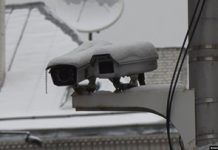Estimated to grow from USD 4 billion to USD 40 billion in the next five years according to a report in the Financial Times recently, the global commercial drone market has skyrocketed in recent years and shows no signs of abating. From delivering parcels to surveying cows in faraway pastures, the application of drones, also known as unmanned aircraft systems (UAS), has expanded into a wide number of uses. These include solutions to many of the world’s problems. Surveying or detecting forest fires, monitoring the status of water bodies and traffic jams, these are just some examples where they are proving their unique worth.
Yet, where the pace of technology outruns regulations, International Standards are essential to ensure a minimum level of safety and quality. Ensuring everyone in this fast-growing industry is on the same page, however, is essential to ensure minimum safety and quality, not to mention coordination and organisation in the airspace. A new ISO standard has just been published to keep everyone in the industry on the same page. ISO 21384-3, Unmanned Aircraft Systems – Part 3: Operational Procedures, has just been published to meet that need. It is the first International Standard for UAS and specifies internationally agreed and accepted requirements for safe commercial operations.
John Walker, Chair of the ISO subcommittee that developed the standard, said there are hundreds of applications for small UAS alone that will benefit from this standard, including construction, safety, security, mining, maritime operations and more.
“The range of applications is growing fast, but at the same time, the industry is very much in its infancy, and there are a number of key obstacles to overcome before large-scale commercialisation is achieved,” he said. “ISO 21384-3 will help resolve those challenges through providing an airworthiness framework for the global UAS industry, allowing for safer and more widespread use.”
The committee is also working on several complementary standards that will address other aspects such as safety, quality and terminology. These include ISO 21384-2, Unmanned Aircraft Systems – Part 2: Product Systems, ISO 21384-4, Unmanned Aircraft Systems – Part 4: Vocabulary, and ISO 23665, Unmanned Aircraft Systems – Training for personnel involved in UAS operations. “Together, these standards will enable the development of new applications for UAS far beyond that which we see now,” said Walker.








